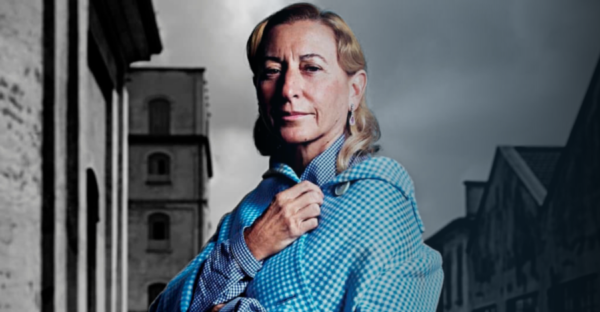
‘Bukvy’ tells the story of one of the world’s most influential women, who has been managing Prada for almost half a century.
How the granddaughter of Mario Prada brought the family brand to the world level
The history of the Italian brand Prada began in 1913. Then Mario Prada and his brother Martino decided to start their own business and opened a store called ‘Fratelli Prada’ (Prada Brothers).
Young entrepreneurs focused on making bags and suitcases from natural and imported materials for wealthy customers.
The company quickly found its customers. From 1919, they even supplied their goods to the Savoy dynasty.

The secret of success was a combination of exclusive design, high quality and special chic: the brand was associated with practical luxury and elegance. However, it was still a long way to conquer the world market.
Interestingly, the heirs made the brand truly famous, despite the fact that Mario Prada opposed participation of women in the family business because of own conservative views.
Mario’s son was not interested in father’s business, so the company was handed over to Mario’s daughter Luisa. Under her leadership, in the 1950s, the company entered the foreign market, and Prada products began to be sold in America and Europe.
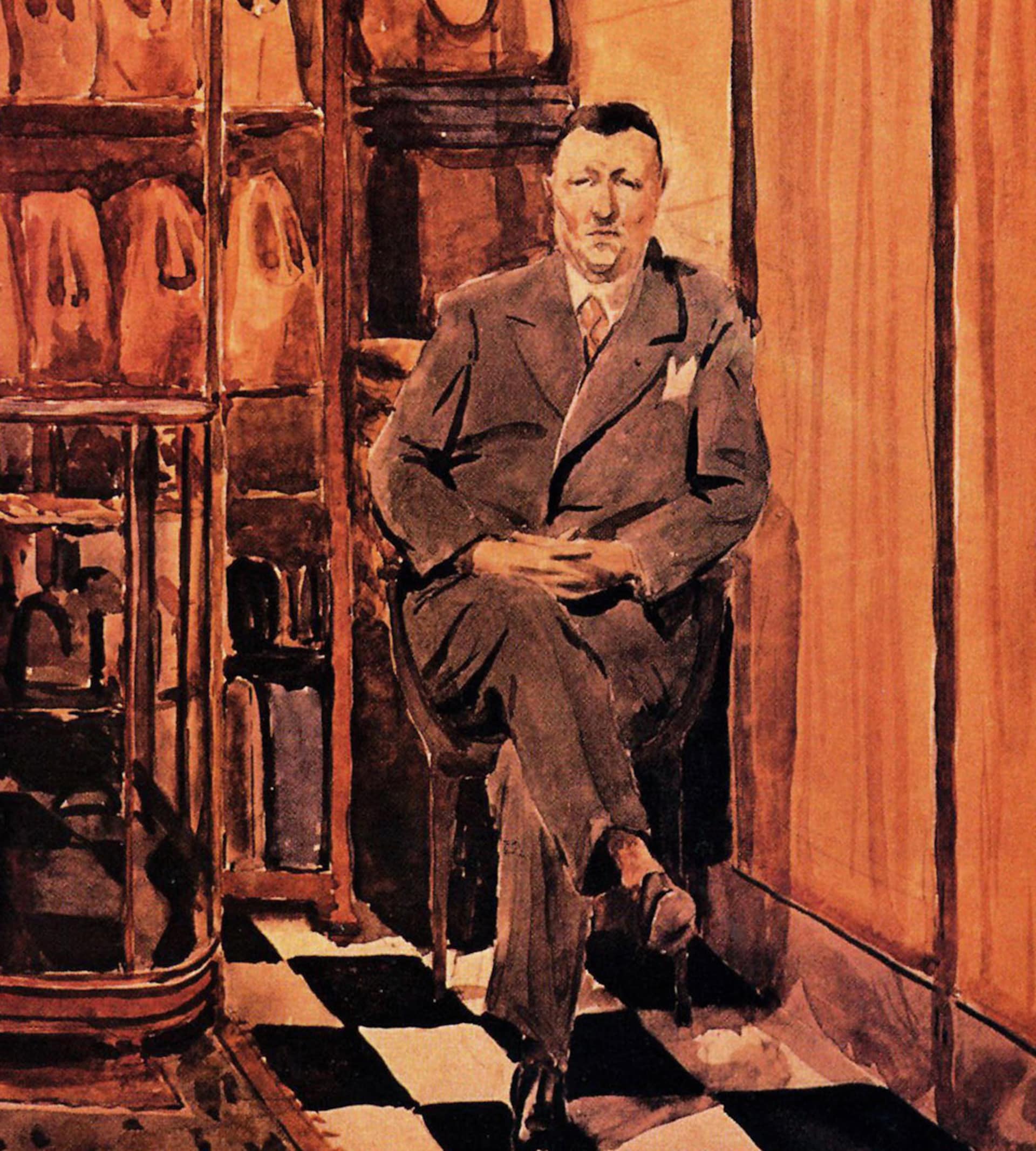
Mario Prada, Source: prada.com
Luisa followed her father. She sold road accessories decorated with rare woods, precious stones, crystals and premium leather. Under her management, the company secured the status of a luxury brand.
Soon lighter and more convenient to transport suitcases with wheels appeared on the market. Exquisite and exclusive, but bulky Prada bags began to sell worse. In the 1970’s, the company was on the verge of crisis.
Then Mario’s youngest granddaughter, Miuccia Prada, began to help her mother and became more and more involved in the family business. In 1978, she headed it.

Miuccia Prada, photo: Maria Mulas
It was under the leadership of Miuccia that the brand received the name ‘Prada’, its famous logo, and gradually became what it is today.
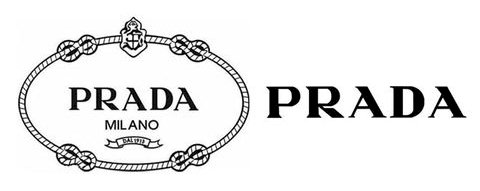
On the left – the first version of the Prada logo with the company name, city of origin, year of foundation and royal heraldry and four nautical knots at the top. On the right – a modern version, in which the emphasis is exclusively on the text.
Prada is now a large multinational company producing clothing, footwear, accessories, bags, sunglasses, cosmetics and perfumes.
The company’s turnover in 2020 reached 2.39 billion euros, and net profit – 54.37 million euros.
In addition to its own boutiques, Prada also manages Miu Miu, Car Sho, Marchesi 1824 and Church’s brands.

Prada Boutique in Shanghai. Source: prada.com
Who is Miuccia and what is her secret?
Miuccia Prada is called one of the most influential women in the world, noted for her own refined style and significant wealth ($ 5 billion as of November 2021 according to Forbes and 6 billion according to Bloomberg).

Miuccia Prada. Photo from open sources
She was born on May 10, 1949, in the family of Luigi Bianchi and Luisa Prada. She has two older brothers and sisters (Albert and Marina). Interestingly, Miuccia got her mother’s last name being an adult, after adoption by her aunt. In open sources, there is no detailed information about the circumstances of the adoption, as well as photos of Miuccia’s family.
In general, the biography of the world-famous designer is full of white spots. However, the facts about her life from the interview reveal many interesting details about how Prada managed to become who she is today.

Miuccia Prada. Photo: Brigitte Lacombe
Communism, feminism and pantomime
Miuccia grew up in the 1960s, when the hippie movement emerged, advocating the liberalization and democratization of the traditional society. Hippies fascinated Miuccia in her teens.
Being a student at the University of Milan, the granddaughter of the famous designer became interested in feminism.
The second-wave feminism, which focused on the inequality of men and women (especially in terms of reproductive rights) and the issue of freedom of sexuality, was then gaining momentum.

Manuela Pavezi and Miuccia Prada, 1968. Photo from open sources
Miuccia recollects those times as follows:
‘In those days, I was heavily into politics and rebellion. I never set foot in the university, except for exams. I was too involved in politics.’
Despite this statement, Miuccia successfully completed her studies at the university. And probably got a PhD in political science, as evidenced by numerous media reports.
However, the topic of her dissertation is not available in open sources.
Moreover, the future designer at that time became a member of the Communist Party of Italy and participated in the women’s movement.
‘But [communism] was very common back then. Every young kid who was vaguely clever was leftist, so it’s not that I was so special. For sure, I decided to be part of a group.’
It was inappropriate for a feminist and communist to talk about fashion, but Miuccia could not live without it. So she often wore jeans, sneakers and other things from fashion brands to meetings or rallies.

Miuccia Prada, 1982. Photo: Maria Mulas
It is also interesting that the heir of the anti-communists family with a PhD was on the edge of almost dedicating her life to pantomime.
After graduating from the university, she joined Milan theater troupe Piccolo Teatro. For the next five years, Miuccia acted as a mime artist and often did that on the streets.
As she recollects, there was a Piccolo Teatro in Milan, and she wanted to be with them. She was studying political science then, but pantomime seemed more interesting to her.
Eventually, in the 1970s, she joined the family business, first as a mother’s assistant, later as a company manager.
‘No, in the Union of Women. I was active for years but hated speaking in public, so I gradually began working at my parents’ company, which was the worst thing you could ever do in the ’60s and ’70s, as a feminist—to work in the fashion industry. I was ashamed, but I liked it so much.’
At the same time, in the 1970’s, presenting Prada things at the fair, she met her future husband Patrizio Bertelli. He was Miuccia’s competitor and even, as she stated, copied the design of her products.
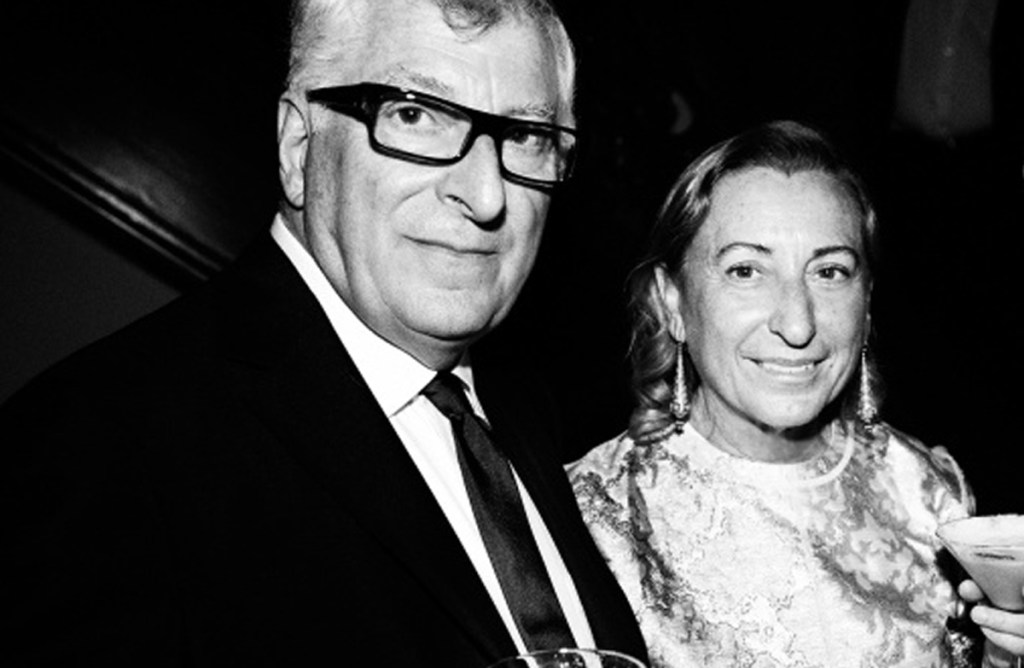
Miuccia Prada and Patrizio Bertelli. Photos from open sources
They started arguing the very moment they met, as she remembers.
Later, Bertelli became not only her romantic partner, but also a business partner of Prada, taking on the organizational activities. To this day, he runs the company with his wife as CEO of Prada Group.
The couple still lives in the house inherited from Prada’s parents. They have two sons, Lorenzo and Giulio, who have not yet joined the family business. Lorenzo is a famous racer, and Giulio is a sailor.

Bertelli-Prada family, 1999. Image: Vogue

Lorenzo Bertelli, eldest son of Miuccia Prada. Photo: Vogue

Giulio Bertelli, youngest son of Miuccia Prada. Photo: The Ocean Race Europe
Neither pantomime nor politics became a matter of life for Miuccia, but she has not left the struggle for women’s rights. The media call her an ‘icon of feminism’.
‘I have always believed in collaborations and made sure I worked with and supported female artists… In cinema, we have worked with great female directors for the short films…and recently even with cartoonists in our Prada collection. It’s because I’m a successful fashion designer that I’m able to realize the artwork. My job is being the anchor.’
How Miuccia understands beauty
Largely, the success of the brand is the achievement of Miuccia Prada, who has been managing the creative component of the company’s work for over 40 years. It all started with her love of clothes, because the very idea of doing business contradicted her views and did not attract her.
‘I always accepted my love for clothes, but I didn’t want to enter into the fashion business. But I did it, I think, because I probably liked it. And the liking of doing it was more than the theoretical dislike.’
Miuccia turned her favorite and hated fashion into the subject of her own struggle, in particular, with ‘beauty’ in the general sense, which Miuccia always called ‘bourgeois’.
She always wanted to go against beauty and sexuality stereotypes.
High level of education and progressive views were and are the foundation of her design style.
She continues to carry a powerful feminist message and her unique vision of beauty for over 40 years, both as part of her work at Prada and through her own brand Miu Miu.

Miuccia Prada behind the scenes of the show Miu Miu, 1996. Photo: Rose Hartmann
At the times when she was beginning her career in the industry, fashion was preoccupied with forcing people, especially women, to look conventionally beautiful. It was not interesting to her:
‘Completely. It’s against any cliché, for so many reasons. That, I never thought about. But I can run through the list. First of all it’s because there is the political side, which is rejecting that idea, because simply, it is wrong, it’s not dignified for women, so you have to be a doll to be beautiful, always the same. That’s why I hate bias cut, everything that people think make women beautiful. I’m against that, in principle, from a personal and human point of view. The other reason I am against it is because it is banal. I want to be more clever, or more difficult, or more complicated, or more interesting, or more new…’
Miuccia became known for her unexpected and even eccentric decisions. She introduced a nylon backpack. This material ‘Fratelli Prada’ used from the beginning to wrap expensive leather goods, not to make their own goods.
This product of Miuccia became a hit of its time. And now nylon is not just one of the main materials of Prada, but also one of the key symbols of the Italian fashion brand.
Miuccia introduced the concepts of minimalism and restraint. Clean and simple lines combined with subtle eccentric details and luxurious fabrics were the hallmarks of her debut collection (AW 1988-89). Pay attention to the style of the models, critics said they looked like problem girls.
As the designer herself admits, for a long time her approach was incomprehensible to the general public.
She tells that everyone hated what she was doing, except for a few smart people, for the followers of the classics style it was something disturbing and for trendy avant-garde artists, it was too classic.
However, in the ‘minimalist’ 1990s, a real success awaited Prada.

Miuccia Prada with American actor Willem Dafoe at the opening party of the Prada boutique, New York, USA, 1996

Miuccia Prada and supermodel Carna Bruni, 1994. Photo from open sources
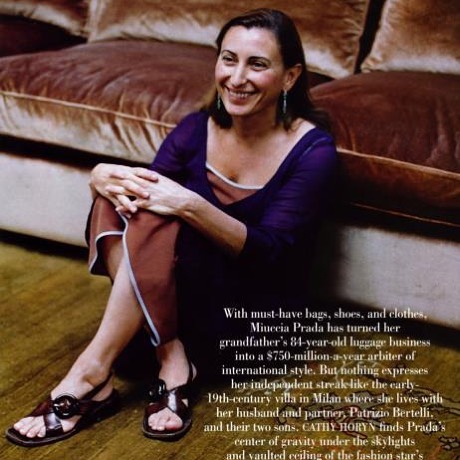
Miuccia Prada, 1997. Photo: Vanity Fair

Miuccia Prada, 1997. Photo: British Vogue
Women wore stylish and elegant costumes, while maintaining their confidence and femininity. And Miuccia’s brand met the demand for it.
Critics then named Miuccia’s style ‘ugly chic’.
“Ugly is in” – so was titled Pulitzer Prize-winning Robin D. Givhan’s article.
This assessment accompanies the brand to this day.
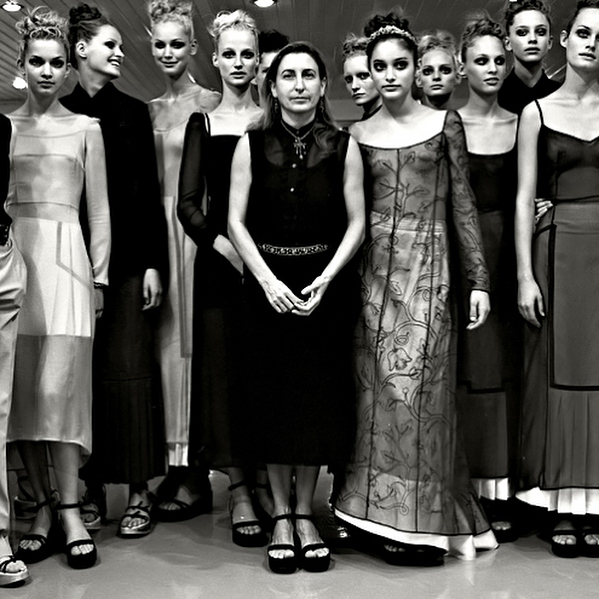
Miuccia Prada after the presentation of the SS1997 collection Photo: Filippo Fortis
According to Prada design director Fabio Zambernardi, the show shocked with unusual ideas and concepts and the brand declared itself loudly.
‘The attention started to happen when the shows became a little more out there with ideas and concepts that seemed more shocking, shocking in the use of wrong materials, the use of nylon no longer just for bags, the exploration of ugliness versus beauty’, he said.
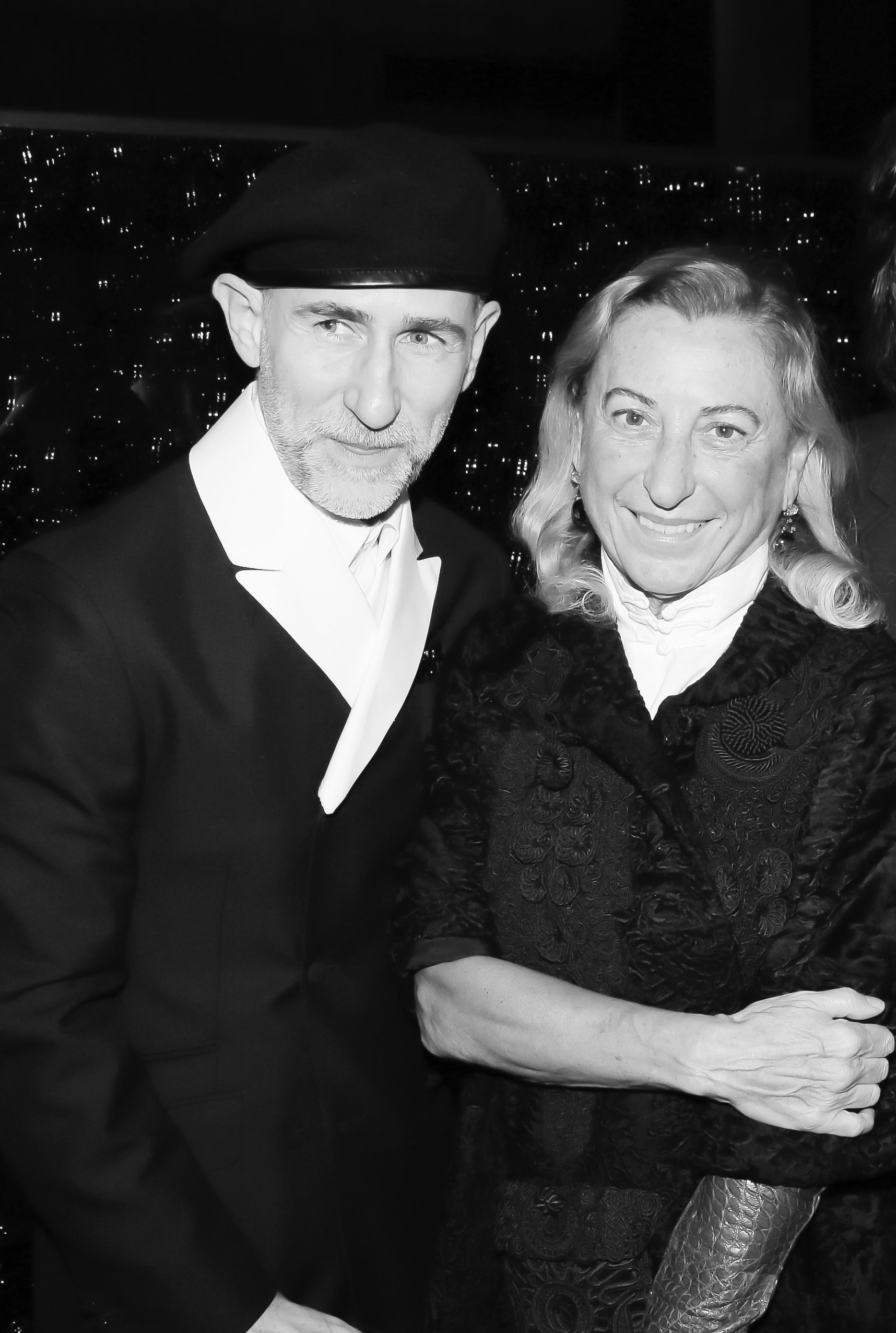
Fabio Zambernardi and Miuccia Prada, 2015. Photo from open sources
The embodiment of this ‘ugly chic’ was the collection of 1996, made of fabric reminiscent of the popular in the 1970s curtains in dirty colors with hand-painted stripes and patterns. It is worth understanding how different it was from what famous competitors (Tom Ford, Gucci, Versace) did, glorifying sexuality in their collections at the time.
Subsequent collections of Miuccia Prada were filled with purposeful contradictions. For example, the SS04 collection included continuous references to the 1950s, happy nostalgia, but without the repetition of vintage clichés.
Creating the AW08 collection, Miuccia sought to work ‘without any point of reference, with no pre-conceived idea beyond what looks new and modern to the eye’. She simply made her collections new and modern.
The collection’s priority was to create something ‘minimal, something that was feminine and strong – but in the end, not so sexy’.
‘I try to make men more sensitive and women stronger’, Prada said in an interview.
She managed to do it, giving clothes a certain inner strength.

Miuccia Prada, 2000. Photo: Vogue US

Miuccia Prada. Photo: Vogue UK
Although women are the focus of Miuccia’s work, her portfolio also includes many bright works for men.
When she creates clothes for men, she thinks what she would wear if she was a man.

Miuccia Prada, 2004. Photo: Vogue US
Miuccia’s goal is to find a balance so that men in her clothes do not look funny or provocative.
‘In fashion men are limited. I like to enlarge a little bit, but not in a way that becomes ridiculous or so exaggerated that it becomes a joke. Because I am a woman, my fantasies are more about women.’
The latest collection was created together with Raf Simons:
With the help of visual expressions in her collections, Prada gave a new meaning to what femininity is. The world values her brand because of a new look at fashion, women and interaction between women and men. This makes Prada one of the ten most popular clothing brands.

Miuccia Prada. Photo: AMIT ISRALEI

 Creative director of ROA Patrick Stengbye talking about the shoes he chooses for running, what the brand will surprise us with in 2024 and President Zelensky’s style
Creative director of ROA Patrick Stengbye talking about the shoes he chooses for running, what the brand will surprise us with in 2024 and President Zelensky’s style 





